Ron Howard is an Oscar-winning director, famous for some of Hollywood’s most well crafted and critically acclaimed films including, A Beautiful Mind, Apollo 13, and The Da Vinci Code.
The Ron Howard MasterClass considers the art of directing from his perspective as both actor and director. Given his prolific status in the world of film and television, I saw this course as a unrivalled opportunity to learn from one of Hollywood’s most respected elites.
But what is the Ron Howard MasterClass like? How long is it? And is the Ron Howard MasterClass worth it?
I'll be answering these questions and more in this Ron Howard MasterClass review, and sharing my honest opinion of Ron Howard’s course-including what I did and didn’t like.
Covering nearly 8 hours, this MasterClass is extensive. As a result, this review will be fairly long. If you’re interested in just the headlines, this precis is for you:
.
Quick summary
Learn how to:
- Find a story you love
- Cast the right actors
- Evaluate and refine a script
- Understand different camera techniques
- Work with your team and collaborate with your editor
- Use sound design and music to enhance themes
Pros
- Learn from an acclaimed expert with great teaching skills
- Gain insight into working relationships
- Understand the importance of story
- Great case studies
Cons
- Occasional unexplained jargon
- Some over long lecture style lessons
Course length: 32 videos, 7hr 48m
Best for: anyone interested in filmmaking or writing. It even gives some good insight into acting. Most of the lessons are easy to follow, but it’s worth noting that Ron does assume some basic knowledge of cameras, lens types, and film terms.
Overall: I think Ron’s course is definitely worth it. The class covers a lot of ground and has a great balance of theory and practical demonstrations.
Now for the detail, here’s what I’ll be covering:
- What this MasterClass will teach you
- What I loved and learned and thought could be improved
- Target audience, price, alternatives, and whether the course content is unique
- Final verdict: Is the Ron Howard MasterClass worth it?
First, the basics:
About Ron Howard
Ron Howard is an American filmmaker and actor, rising to stardom in his role as Richie in the 70s sitcom, Happy Days.
He went on to direct Apollo 13, which won 2 Academy Awards.
His biographical drama, A Beautiful Mind, went on to receive 2 Academy Awards and a Golden Globe award for Best Motion Picture.
As one of America’s best-loved directors, I was enthusiastic to see what Ron Howard’s MasterClass had to offer.
If you haven't seen the trailer for this MasterClass, I highly recommend you check it out:
About MasterClass
MasterClass is an online educational platform founded in 2015. It specializes in video content from world-renowned experts in their fields.
With over 190+ classes from celebrities such as Gordon Ramsay, Hans Zimmer, and David Lynch, it’s unsurprising that MasterClass has surged in popularity.
Another huge bonus to MasterClass is its high production values and video quality. For a detailed review of MasterClass check out our MasterClass review.
All this being said, MasterClass might not be for everyone. So I hope to cover the pros and cons of this MasterClass to help you decide whether it’s for you.
An Inside Look Into Ron Howard’s MasterClass
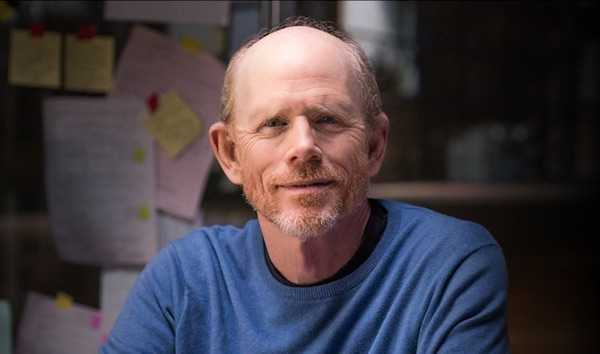
Ron’s MasterClass covers an impressive 7 hours and 48 minutes of video content. MasterClass breaks this down into 32 video lessons focusing on different aspects of directing.
The class also includes a 20-page Workbook and a Community Hub where classmates can their learning.
After a short introduction the course continues as follows:
Lesson 2: Choosing a Story

“Storytelling is almost always a combination of something old and something new.”
At the start of the course, Ron outlines the universal importance of storytelling, how it informs every creative decision when filmmaking, and should therefore be the first thing we should consider as directors.
He relates what he sees as the key components of a good story and details how he identifies ideas.
Coming from an acting background, Ron considers how acting and directing relate and shares how his acting experience provides insight into what draws audiences to certain stories.
He provides examples of films from recent years that have met his criteria, and pinpoints what he thinks made them so successful and powerful.
Ron discusses how, though taste is subjective, there are certain conventions in directing that lead to success. This sets the stage for how he will discuss directing for the rest of the course.
Lesson 3 & 4: Evaluating and Refining a Script
“Structure is about momentum.”
In this 2-part lesson, Ron teaches us how to do the following:
- Ask valid questions of the script
- Use checklists to rate the key components
- Test ideas to evaluate their strengths
- Consider genre in relation to story
- Better understand how narrative works
- Collaborate on rewrites
As Ron puts it, script-evaluation is a chance for us to learn and explore new ideas and possibilities. He takes us through the “checklist” he uses to assess scripts and rate them according to their potential audience-satisfaction.
One thing I enjoyed about this chapter was Ron’s cementing of an abstract concept. He doesn’t give any examples of script-specifics but he does teach us the fundamental questions we should be asking to decide whether a script is worth our time.
Despite his pragmatic advice, Ron does encourage us to revel in the excitement of the film. He aids us in orienting our perspective on the script, focus on audience expectations, an idea’s potential, and the possibilities of successful collaborations.
Lesson 5: Story Inspiration: Case Studies
“You’ve got to feel the flush of inspiration around the idea.”
Ron takes us through his process of finding themes and tells us what he wanted to convey to audiences with reference to both Splash and Cinderella Man.
In particular, he focuses on how he researched for inspiration. This, he says, is a way of getting a feel for the world of your film and thinking about the route it could take.
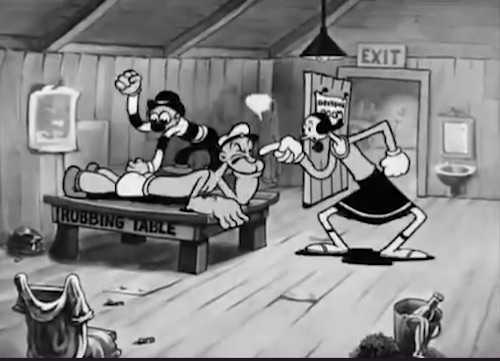
He takes us through a number of his films to show us this process, and shares the surprising inspirations that led to the final projects.
Lesson 6: Developing the Film
“Screenplays are not movies. They’re blueprints for movies.”
Here, Ron elaborates on the part of filmmaking he calls “Development Hell.” This describes the process of finding writers, building the project’s momentum, and the demands of writing a movie narrative.
He takes us through these various points of development, estimating how long each step can take and what hurdles we can expect to encounter.
He specifies the collaborations we need to establish before filming and gives us some practicalities we should consider when making logistical or strategic choices. These will steer us back on track when faced with obstacles and compromises.
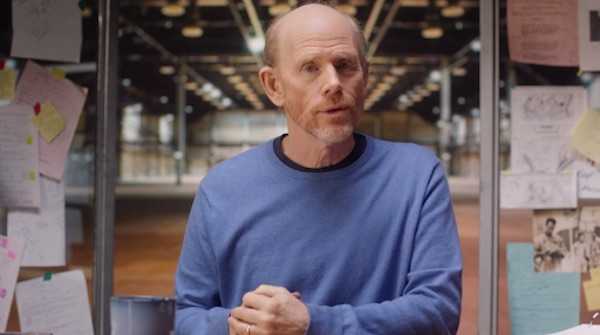
What I liked about this section was Ron’s openness about the practicalities of filmmaking. This includes the differences between sets and locations, as well as what other departments a director should be involved in.
At the end of this chapter, he highlights the importance of the editing room, which he thinks of in “three phases.” He lays out what these are and how they work to develop the film. As he sees it, the editing room is “really where the film is made” and is ultimately the final rewrite.
Lessons 7 & 8: Collaboration
“I revel in the excitement of the collaboration. It energizes the set in a great way.”
Here, Ron emphasizes the need to strike a balance between creative freedom and firm decision-making. As he sees it, the director is the keeper of the story and has the final say in driving the project.
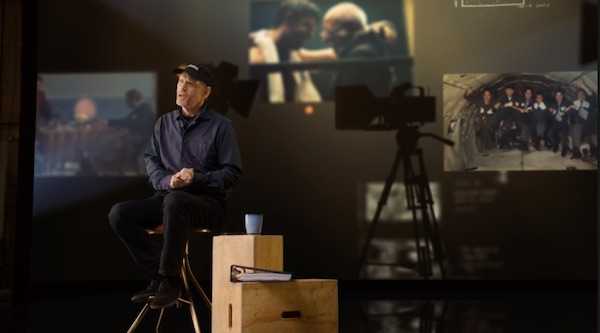
He elaborates on how to do the following:
- Engage with department heads to deal with a project’s logistics
- Grant creative opportunities to your teams
- Energize your sense of inspiration
- Work in “threes” to creatively solve problems
- Collaborate successfully in all the project’s stages
In particular, Ron focuses on our need to find a “collaborative SOS.” He expands on some of the key collaborations that have made his works successful, and also gives examples of other directors who excel in this.
What I liked about this topic was that Ron was keen to explore all sides of the collaborative debate and suggested tactical ways in which we can create a balanced working environment.
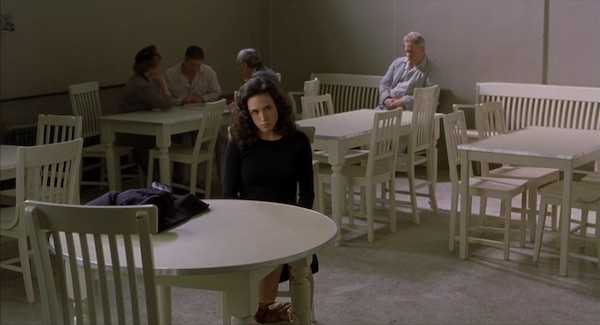
Ron tells us how he did this with A Beautiful Mind, citing his need to hear others’ creative visions and run them through his own filter to negotiate ideas and ultimately serve the movie positively.
He also shows us a scene from Apollo 13, pinpointing ways in which the film and its characters developed through creative conversations.
Lesson 9: Working with Cinematographers
“I always cast the movie with the cinematographer.”
While discussing collaborative relationships, Ron distinguishes the relation between director and cinematographer as one of the most important. As he specifies, finding creative compatibility is essential.
In this chapter, he also teaches us how to:
- Connect with cinematographers
- Constructively share ideas and establish a common goal
- Understand the director’s and cinematographer’s job
- Use cinematographers as a source of inspiration
As someone who approached directing from an acting background, Ron has a unique perspective on these working relationships. He tells us how his acting career helped him to understand the working dynamics on set. Also, he shares what he has learned from working with cinematographers throughout his career.
I liked that he gave us some sound advice on how to approach working relationships without being intimidated. It’s clear his work as a director and an actor has given him some keen insight into the relations that take place on set.
Lesson 10: Cinematography
“I like to try to understand a movie and let it begin to talk to me.”
Turning to cinematography itself, Ron tells us how he approaches cinematography from his directorial perspective. He discusses the types of directing he is and isn’t interested in, and posits the importance of letting a movie “talk to you.”
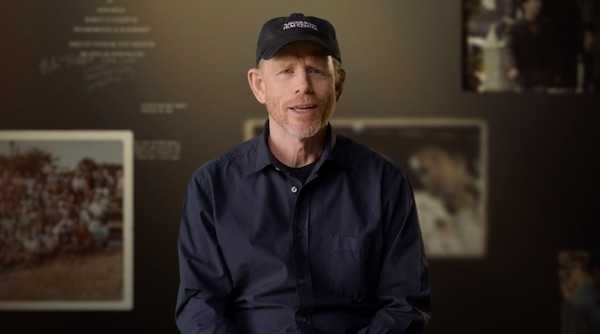
Ron sees themes are the most significant aspect in shaping cinematography and prompts us to consider what emotions we want our visuals to provoke. He also flips this to consider how visuals can inform themes.
For Ron, cinematography is a visual language that has the potential to communicate a subject to its audience. This, he says, is his focus when making creative choices. He draws particular attention to how light can communicate emotion, and uses A Beautiful Mind to illustrate how this light portrays mood.
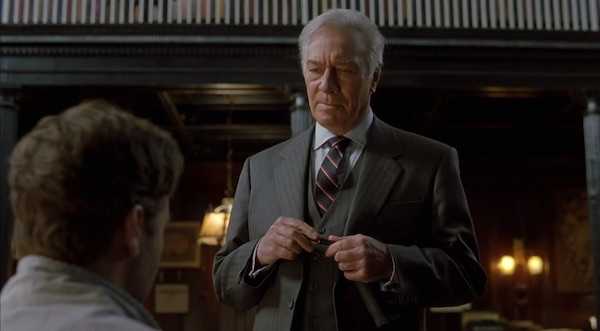
Ron discusses this case study in some detail, describing the process of creating a color palette suited to the film’s themes and characters.
In fact, Ron proposes we experiment with different mediums to better understand “the grammar of photography.” He relates to us how he learned more about cinematography through experimenting and collaborating with others.
He concludes this section by offering some interesting sources to research. I liked that he gave us alternatives to the high production films he is mostly known for. He really encourages us to experiment with the resources we have in order to learn more about making a film.
Lesson 11: Production Design
“There’s a tremendous amount of pressure on production designers.”
As well as cinematographers, Ron dedicates time to discussing the value of production designers (from both a creative and logistical standpoint).
Ron admits that a production designer’s role can seem elusive, and he spends this section teaching us the following:
- What production designers do and who they are responsible for
- How to make a creative connection with them
- Ways in which to communicate your vision
- How to successfully manage collaboration
This section gave some good insight into what a production designer can achieve and the ways in which we, as directors, can better communicate our visions. A lot of Ron’s advice was specific and tangible, which I took as a great plus.
Lesson 12: Case Study: Frost/Nixon
In this case study, Ron hones in on how he and his team presented the 1970s on screen. He discusses the different options for the visual style and why he opted for naturalism to give precedence to the film’s themes.
As a movie that originated from a play, Ron needed to make creative decisions in order to find the right energy for the film. He tells us what he wanted to achieve when shooting, and particularly focused on how shooting style could reflect character.
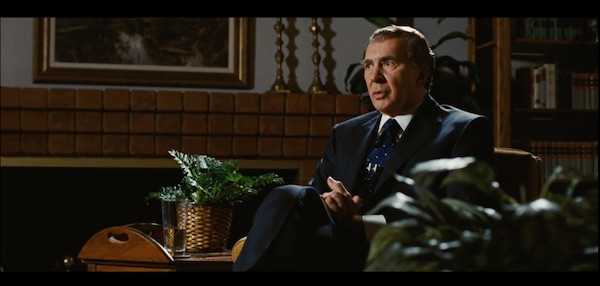
Ron also teaches us the benefits of shot lists and takes us through how he used these to create a daily objective. This was interesting advice for any aspiring director and offered a practical way of organizing such a huge project.
On a more personal level, he discusses why he wanted to film Frost/Nixon. He also tells us how he realised and worked through the play’s cinematic possibilities. This was a nice segue into the following chapter on research, as Ron gives us some unconventional tools he used to research for the film.
Lesson 13: Creative Research
“Use research to reinforce your vision.”
Here, Ron considers the research process as it relates to the initial spark of an idea. He discusses the importance of visuals in his research and even talks us through his creation of a “research reel” for Cinderella Man.
What I found interesting was that Ron sees research as “group intellect at work” rather than a solitary process (reinforcing his belief in the power of collaborating). He references key discussion points in his research, as well as the research contributions of particular actors, that helped his projects to evolve.
Lessons 14-16: Scene Deconstruction
“It’s your job, as the director, to be thinking about the overview.”
In this section, Ron takes us through 3 film scenes for analysis, including his own A Beautiful Mind and Apollo 13. He also discusses Steven Spielberg’s Raiders of the Lost Ark as a model for shooting action scenes.
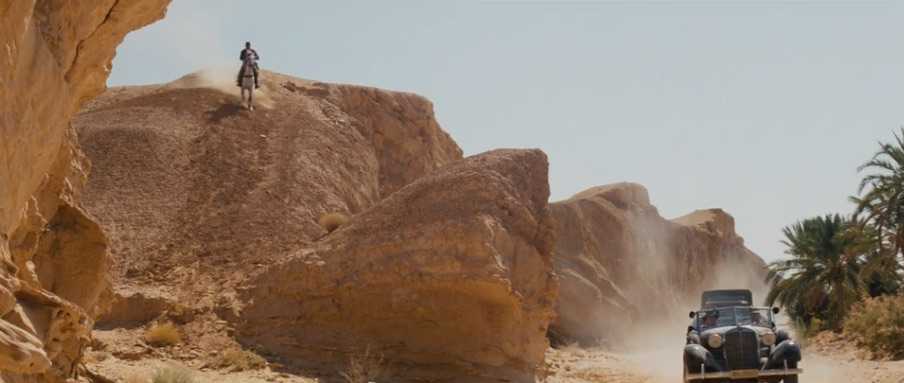
It was in this section that I found Ron’s advice to be the most specific and valuable. He shares his secrets for deconstructing a scene to better understand its mechanics. This section includes a lot of field-specific language, including shot-types, lenses, and storyboarding.
Most of this is easy to understand and becomes even simpler when he breaks it down. Because we watch the clips along with him, we gain insight into the techniques that make the scenes so successful.
With his own film scenes, he is even more specific about the creative decisions he made and how he executed them. In A Beautiful Mind, this includes the goals of the screenplay through to how Ron built the film’s sequences.
For any film student or visual learner, I thought this section was a stand-out. Ron even shares his own cinematic “hacks” for achieving certain stylistic effects.
Lesson 17: Casting the Right Actor
“You have to be very meticulous about the casting process.”
Ron begins this chapter by sharing the “William Wyler formula” for casting. As Ron sees it, there are certain ways of getting a feel for the right actors and for encouraging a good rapport amongst the cast members.
In this section, he reaches us how to do the following:
- Use our gut instinct when casting for roles
- Find creative compatibility with actors
- Overcome casting missteps
- Approach the auditioning process
Lessons 18-19: Working with Actors
“It’s not essential that you lead them. It’s essential that you protect them.”
As Ron elaborates on finding the right actors for his films, he suggests the importance of “protecting” actors. He shares ways in which we can increase our chances of gaining wonderful performances.
Ron stresses our need to feel empathy with our actors, and gives us some tips on how we can do this.
As in other parts of the course, Ron emphasizes the importance of collaboration and finding an equilibrium in creative relationships.
Along with this, we learn how to do the following:
- Strike a balance between directing and collaborating
- Understand our actors’ relations to their characters
- Better appreciate and make use of rehearsals
As this chapter concludes, Ron prepares us for the next half of the course. This focuses on a more hands-on approach to learning, including:
- A read-through staging and rehearsal
- Feature staging for masters
- Staging for coverage
- Alternate staging possibilities
- Steadicam staging
- Staging for an indie shoot
Lessons 20-27: Staging Frost/Nixon
“Good scenes are always written with objectives.”
For many, this was the course’s most highly anticipated section. Here, Ron emulates a rehearsal space for Frost/Nixon with new actors assigned to the roles. He gives us some scene context before showing us what a rehearsal and staging would look like.
I liked that this gave us a chance to be a fly on the wall in a rehearsal run-through. It was insightful to see Ron working through the lessons he had taught us. It particularly helped to show us how his advice translates on set.
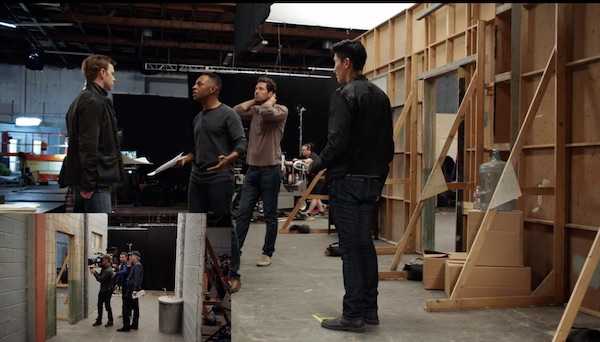
In these videos, Ron shows us how to create depth when shooting. He also takes us through some different styles of filming. This includes hand-held shooting, steadicam, dolly filming, and even how to shoot for an indie film.
This is worth the watch for anyone interested in seeing hands-on directing. It shows how Ron communicates with the actors and grants them creative license while remaining in charge.
One downside is that we’re learning only by observing. Ron doesn’t address us in these chapters and occasionally uses jargon that is not explained by him or the Workbook.
Lessons 28-29: Editing as Rewriting
“Editing is the process where the movie or the TV series is actually made.”
According to Ron, editing is the film’s final rewrite and the time to come to terms with its possibilities. Ron imparts the reality of editing as a process that must be separate from filming. As he puts it, “what matters now is what you have to work with.”
He teaches us the importance of a great editor with whom we can discuss the film’s potential. We learn what to look out for in an editor and how we can discover new possibilities during this stage.
Ron gives the example of Apollo 13 as a challenging editorial process. He takes us through the editing process that led to the creation of “three different perspectives” that are focused on throughout the film.
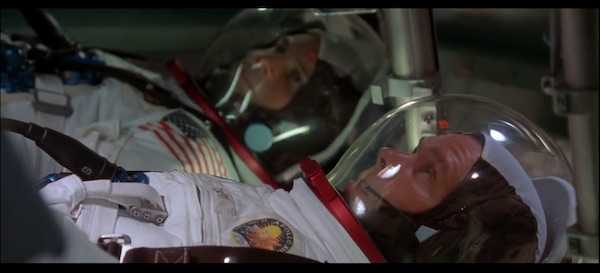
Like other MasterClasses I had taken, Ron’s course reinforces the need to show edits to an audience. The editing process, he suggests, is akin to forming a statue out of marble. It’s a process of “whittling down” to get to the final cut. He describes this as one of the most heartbreaking yet rewarding parts of the project.
Lesson 30: Sound Design
“Great sound design often begins in the editing room.”
Ron’s discussion of sound in movies was particularly interesting. He talks about our primal reaction to sounds and how we can use sound on a subliminal level. Like other kinds of film language, we use sound to send messages to the audience. This works on a deeper level to reflect themes.
In this section, he covers the following:
- The differences between sound and music
- How to design sound to suit our stories
- The shooting/re-recording options we might have
- How to use post-production to finish the project
As he describes it, sound design is crucial for aligning viewers with a film’s story. He takes us through the ways in which humans relate to sound, and how we can use this to best tell our stories.
Lesson 31: Music and Scoring
“Talk to composers like actors.”
Similarly to working with actors, Ron tells us the benefits of empathizing with our composers and giving them creative freedom. As he sees it, composers and actors have similar merits when it comes to their abilities to convey a story’s themes.
He further elaborates on the distinction between music and scoring and shares how some of his film scores developed. Ron focuses specifically on how the music reflected themes and counter-themes, and the challenges he faced along the way.
On a practical note, Ron also discusses 2 “exciting” ways we can shoot music. This was a great takeaway point and was specific enough to put into practice ourselves.
Lesson 32: Find a Story You Love
“I hope this gives you the confidence to go out, find a story you love, and tell it.”
In his parting words, Ron reinforces our need to stay “tuned in” to the language of cinema. He tells us how we can use his class to see cinema in a new way and shares some further advice on how he finds inspiration.
Ron sums up his MasterClass in the hope that we can use these lessons to better view the world around us. He gives us some final words of advice and wishes us luck on our ways.
My Experience of Ron Howard’s MasterClass
Overall, there was a lot of things I liked about Ron Howard’s MasterClass, and I will highlight them below.
That being said, I don’t think this is a perfect course and will also share some points for improvement.
It’s worth bearing these pros and cons in mind before committing to the course.
What I Liked About Ron Howard’s MasterClass
In-Depth Learning from an Expert
What’s impressive about this MasterClass is not only Ron’s reputation but also the quantity of subjects he covers. With nearly 8 hours of content, Ron covers a lot of ground. This includes lessons in script-editing, case studies, and collaboration.
Ron does justice to his topics by breaking them down into 32 lessons and explaining them in great detail. I was impressed that this included the director’s relationship with key members of the crew. While I’d seen this touched upon in other classes, no one had gone into as much depth.
With its high production values and well-ordered chapters, MasterClass is a great opportunity to learn from directors on a near-1-1 basis. All of Ron’s sections are clearly laid out in the chapter contents and it’s easy to revisit sections.
Excellent Practical Examples
Ron dedicates 3 chapters to scene analysis, giving practical examples of how he and other directors achieved certain goals. Along with this, MasterClass dedicates a further 8 lessons to a re-staging of Frost/Nixon.
I particularly liked the film sequences, as this allowed us to analyze a scene while Ron talked us through their technicalities.
This was a lot like a Film Studies class, making it akin to a seminar experience. I liked that this catered for visual learners who benefit from practical examples and it’s always helpful to have a mix of theory and practical to cement learning.
Ron also helps us to understand the following:
- Staging and shooting action scenes
- Understanding the use of different types of shots
- The helpfulness of storyboards and models
- Different ways of shooting a scene
It was also nice to hear Ron’s analysis of Raiders of the Lost Ark, as this was a film scene that wasn’t his own.
Of course, the re-staging of Frost/Nixon was what many users had signed up for. This was a unique look into how scenes are rehearsed and staged in different ways. I found it useful to see Ron in action rather than only listening to him describe his shooting process.
Engaging Delivery Style
Throughout the course, most users agreed that Ron had a passionate teaching style. He mentors us on how to gain confidence and how to create a positive working environment.
He dedicates a fair amount of time to how he overcomes challenges during filming. This includes creative disagreements and missteps. Ron gave an honest and open perspective on directing, addressing both the hardships and the excitement that arise.
All in all, I found Ron easy to listen to. He shares a lot of advice on all elements of filmmaking, leaving no topic unexplored. I was struck by how great Ron was at teaching, and how naturally he was able to communicate his ideas.
Insight into Working Relationships
A key feature of this MasterClass was Ron’s focus on working relationships. While even 8 hours couldn’t cover the entirety of a director’s collaborations, Ron makes a good effort to tackle three important working relationships:
- Cinematographer
- Actors
- Production designer
He discusses the roles of each member on the production team and how the director can work with them to meet their end-goal. There’s a lot of focus on building a good rapport as well as how to work under pressure.
Flexible Advice
Although this course is focused on directing, a lot of Ron’s advice is transferable to screenwriting and editing. Most users conceded that the course exceeded their expectations, giving them a lot more information than they anticipated.
I liked that his advice was applicable to other aspects of filmmaking. I often use Reddit to get opinions on a course before committing to it, and I found that many commenters were in agreement on this.
"Yes, Ron Howard’s MasterClass is on directing. However, his first couple of lessons are script-related and had some pretty good insights. It is fascinating to hear what a director looks for in a script because I’m so often focused on producers, other screenwriters, or even.. the dreaded audience." - A comment from Reddit
This was a nice way of putting directing into a wider perspective and would also be a great segue into filmmaking for those coming from other backgrounds.
Strong Focus on Story
Despite being a lengthy class, Ron does a great job of staying on course. This is particularly true in relation to storytelling. Ron introduces this concept from the offset and sees it as a fundamental form of communication.
I liked that the story was the anchoring point for the entire class. It brought together many disparate lessons to bear on a bigger picture. Ron also goes into great detail about what makes a fulfilling story. I think this would be applicable beyond the realms of film because, as he says, storytelling is so human and universal.
Access
Currently, Ron’s MasterClass is available in English with the following subtitles:
- English
- German
- Spanish
Overall, there has been good feedback on these captions. They are not auto-generated but have been created with their viewers in mind. The course also contains a Workbook for those who learn better by reading. This is a nice way to gain a summary of each chapter before/after each lesson.
What Could Be Improved
While I liked Ron’s MasterClass, I do think there are some points for improvement.
Unexplained Jargon
Although most of Ron’s lessons are easy to follow, he does use jargon without explanation. For more advanced film students, this is unlikely to be a problem. But, for me, I would have liked to have some terms explained or to even have a glossary in the Workbook.
As some users have mentioned, this class is beginner-friendly. MasterClass, too, is aimed at learners “of all skill levels.” Some of the technical terms used seem at odds with the beginner-style lessons Ron is giving.
While these are few and far between, they are an obstacle to those with less film knowledge. Luckily, the Community Hub and comment sections are available for those with questions. Additionally, MasterClass gives you the chance to send your questions to Ron.
Ambiguous Promotional Material
A common concern for many students was the slightly misleading promotional material for this MasterClass. For many, the acting segments were missing. Having been included in the trailer, some were disappointed that they couldn’t see the full content.
"Where are the Frost/Nixon blocking classes and working with actors? I looked on the site map and it just brings me to the introduction. Am I missing something?" "Disappointed at what I was led to believe would include a fly-on-the-wall walkthrough of how Ron directs a scene with real actors. It turned out to be promotional material and not actually part of the MasterClass. Very disappointed as this was the part I was most looking forward to." - Comments from the community
While I could view these videos myself, it appears a lot of users couldn’t. Many complained of what they saw as false advertising, and were disappointed in MasterClass as a result.
I’m assuming that at one point, the videos were inaccessible. This could be due to earlier copyright issues or difficulties in uploading. I also noticed there was no section for the block scenes in the Workbook, so it’s possible this MasterClass has undergone several revisions while it’s been online.
Isolated Case Studies
One aspect of the course that stood out to me was the division between sections on teaching and case studies. When Ron does give examples, he is very good at talking us through them and explaining their relevance.
That being said, the case studies are mostly standalone pieces. For those who learn by example, it would have been nice to see more clips interspersed with the longer lessons. A lot of learners agreed on this point.
"I I tend to learn best from example .. some clips from good movies/screenplays would be great!" - Comment from the community
In other MasterClasses, such as Martin’s Scorsese’s, Martin follows a regular pattern of introducing a clip, screening it, and explaining its significance. I would have preferred to see more of this in Ron’s MasterClass as it would have broken up the longer lessons.
Technical Issues
One downfall of MasterClass (and online learning generally) is the inevitability of technical issues. While I’ve found MasterClass highly accessible, videos can buffer and crash like on any other site. This is understandably disruptive.
With this in mind, MasterClass’s Community Team are quick to respond to users’ concerns. I think MasterClass does a good job of addressing most problems as they arise.
Lack of Diversity
As one user put it, Ron’s MasterClass refers mainly to white male directors. Personally, I think this is more of an issue with Hollywood as a whole, and it’s probably unfair to discredit Ron because of this.
"I’ve gained so much respect for Ron Howard, but it’s devastating to hear him, time and time again ONLY cite male filmmakers, directors and actors. He pays so much lip service to diverse perspectives, but he is only citing other white men." - Comment from the community
It’s something we should bear in mind when considering the course. Some good alternatives to Ron’s MasterClass are those by Spike Lee and Mira Nair. It’s refreshing to see more online resources including notable BAME directors. These classes are also specifically focused on independent filmmaking.
Who Is This Course For?
While Ron’s MasterClass is listed under “directing,” I think it’s also suitable for anyone interested in filmmaking or writing. It even gives some good insight into acting.
Ron doesn’t specify his target audience directly or indirectly. Rather, he shares his own process and lets us take what we choose from it.
Most of the lessons are easy to follow, but it’s worth noting there is the occasional jargon that could throw off less knowledgeable viewers. Ron does assume we have basic knowledge of cameras, lens types, and film terms.
If you take this MasterClass, you will learn how to do the following:
- Choose a compelling story for your film
- Evaluate and refine a script
- Develop a film through collaboration
- Work effectively with your cast and crew
- Research for your movie
- Analyze scenes and identify key techniques
- Successfully cast and work with actors
- Better understand read-throughs, rehearsals, and stagings
- Refine your film in the editing room
- Establish the right sound design and music/scoring
On a scale of 1-10 (1 being a beginner, and 10 being an experienced director), I’d say this course is geared towards those between 3-8. This is because Ron uses a lot of terms that are more advanced than in other courses. At the same time, he does share a lot of insight into a director’s working relationships. This might not be as relevant to those with more experience.
How much does the course cost?
At the time of writing MasterClass had three subscription offers. The cost of these (per month) is:
- Individual (1 user) $10
- Duo (2 users) $15
- Family (up to 6 users) $20
All are billed annually, which at first glance may seem pricey.
However, you can considerably reduce your costs by joining with friends or family. And of course by taking as many courses as possible.
With nearly 200 courses on the platform you’re likely to find quite a few to interest you. Even if you buy an individual membership and find only 10% of the courses of interest this still works out to only $6 a course:
$120 (annual individual membership fee) / 20 courses = $6.
And if you join with friends or family then the cost of each course is drastically reduced. Check out our MasterClass review or MasterClass cost articles to see how.
Bearing in mind that these classes are taught by global leaders in their fields the value is unbeatable. You can pay over $100 for an online course taught by someone you’ve never even heard of, never mind an academy award winning filmmaker!
What’s more, MasterClass also offers a 30 day refund if you’re unhappy with your purchase.
You can also buy MasterClass as a gift.
Alternatives to Ron Howard’s MasterClass
If you’re not sure whether Ron Howard's MasterClass is right for you, there are some other relevant MasterClasses available including the following:
- Jodie Foster Teaches Filmmaking
- Werner Herzog Teaches Filmmaking
- Spike Lee Teaches Independent Filmmaking
- Martin Scorsese Teaches Filmmaking
- Mira Nair Teaches Independent Filmmaking
- Ken Burns Teaches Documentary Filmmaking
- Aaron Sorkin Teaches Screenwriting
- David Lynch Teaches Creativity and Film
Meaning that for the price of a single MasterClass subscription, you already have access to 8 other relevant MasterClasses. For an overview of other popular classes on the platform check out our best MasterClass article.
Outside of MasterClass, there are other options. These include various courses on Udemy and Skillshare. But one of the best specialist film making platforms out there is MZed (read our MZed review) .
That being said, I think it’s difficult to rival MasterClass in terms of its production values and teaching. MasterClass also has the convenience of having all of its lessons in one place. It’s easy to navigate and to connect with other learners.
Ron Howard MasterClass: What Others Have Said
Ron’s MasterClass met with mixed reviews, with many expressing their disappointment in not being able to access all of the lessons. Most users were optimistic about the course, with one Reddit commenting that it was probably better (and cheaper) than film school.
"I really need to ante up the cash and pay for these MasterClasses: better than film school, and at a fraction of the cost." - Comment from Reddit
Many commenters on MasterClass were impressed with the course content. Many noted Ron’s delivery and teaching as a course highlight.
"Awesome MaserClass. I’ve learned so much! " "I LOVED IT. Ron Howard is a directing genius… thank you, Ron Howard, for inspiring people and teaching people about this amazing job." "Yet another fantastic lesson and insight… Ron Howard is a great director but more importantly for MasterClass and those of us eager to learn, he is also a great teacher." - Comments from the community
I definitely steer to the positive considering the nearly 8 hours of quality content we get access to. The confusion surrounding missing content seemed a shame, as most users who got to experience the whole course were definitely impressed with what it offered.
"Every section Ron delivers so much more than I expected - really well delivered, thank you." - Comment from the community
How long it took to complete the course
Ron’s MasterClass is pretty lengthy when compared with other courses. Some of the 32 lessons reach half an hour in length and it’s better to take this course slowly to appreciate it.
The Workbook is also a nice resource to read alongside the course. It has some useful exercises as well as some further viewing/reading that will help you take an active role in learning.
Because many chapters cover multiple videos, it’s worth grouping relevant topics together so you can watch them alongside each other. This breaks down each subject but also gives you plenty of content to get through.
Is the course content unique?
As Ron’s first and only MasterClass, this course is mostly original. Ron is known for sharing his views on directing in numerous interviews, including in his discussion with BAFTA Guru.
That being said, I haven’t seen any interviews where Ron shares more than 10 minutes worth of content. I don’t think this compares to the 7 hours and 48 minutes we get with MasterClass.
The topics are also clearly arranged and you can dip in and out as you choose. Because of this, I think the class is valuable in its own right and goes into a lot more depth than his interviews.
What You Will Need
Luckily, this course doesn’t require any additional resources. Ron doesn’t set any exercises that need equipment and the only tools you might find handy is a printer. The course PDF contains a lot of material you can explore further.
Ron Howard MasterClass: is it worth it?
I think Ron’s course is definitely worth it. The class covers a lot of ground and has a good balance of theory and practical knowledge.
I feel like I’ve come away with some good information on how to evaluate screenplays and assess what makes a good story. Ron has some great hacks for researching and planning, which I think are applicable to directing and beyond.
Ron talks a lot about craft through his course. I felt this was more practical than other directors who focused on abstract ideas. This MasterClass is definitely more matter-of-fact, and Ron keeps his metaphors to a minimum.
It’s also not necessary to be familiar with Ron’s works. For diehard fans, you’ll likely enjoy his references more easily than most. But, Ron gives ample context for his movies without providing spoilers. I always felt sure of what I was watching and knew exactly what Ron wanted me to pay attention to.
You Will Learn How to:
- Find a story you love
- Work with your team
- Cast the right actors
- Evaluate and refine a script
- Understand different camera techniques
- Collaborate with your editor
- Use sound design and music to enhance themes
For anyone serious about directing, this course is worth it. It covers sometimes double the material of other MasterClasses and offers a lot of further research to explore. And you will have access to at least eight other relevant MasterClasses so you gain gain other perspectives.
Given that you can sample Ron Howard's MasterClass for free and request a full refund within 30 days you have nothing to lose by giving MasterClass a go.
Frequently Asked Questions
An individual subscription to MasterClass is $120 and gives full access to all 190+ MasterClasses over the course of a year.
There are a total of 32 videos and a run time of just under 8 hours.
There isn’t a way to access Ron’s MasterClass free of charge. However you can watch the trailer for Ron’s MasterClass or sample the class for free.
Yet, it has a 30 day refund policy. If you purchase through another supplier, their own returns policy may apply.

Rebecca graduated from King's College university with a first class honours in English Language, followed by a Masters' Degree in Eighteenth Century Studies.

Wonderful website. Lots of useful information here. I’m sending it to several friends ans also sharing in delicious. And of course, thanks in your sweat!
Thank you so much! We’re glad you find the information useful and truly appreciate you sharing it with others. Your support means a lot to us — stay tuned for more great content!